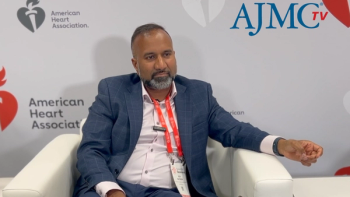Safety Should Always Be a Priority With CAR T for Multiple Myeloma: Surbhi Sidana, MD, MBBS
Cilta-cel’s mechanism of action allows it to penetrate challenging areas of multiple myeloma, providing deep and durable responses even in high-risk patients, explains Surbhi Sidana, MD, MBBS, Stanford University. Still, safety trade-offs should always be a consideration, she adds.
Captions were auto-generated.
Ciltacabtagene autoleucel (cilta-cel; Johnson & Johnson/Legend Biotech), a B-cell maturation antigen (BCMA)-directed chimeric antigen receptor T-cell (CAR T) therapy, has shown promising data in the treatment of relapsed and lenalidomide-refractory multiple myeloma (RRMM) in the CARTITUDE-4 trial (
In part 2 of her interview with The American Journal of Managed Care®, she highlights the impressive long-term data from CARTITUDE-1 trial (
“This is the first time… I don’t know if this is a cure—maybe this is a functional cure in which this is long-term remission—time will tell,” she states. “But this is the first time we’re even able to ask that potential question in myeloma. We’ve never been able to do that before. This is very exciting.”
Although the efficacy of cilta-cel is groundbreaking, Sidana emphasizes that it is important to be mindful of the safety trade-offs. Data from the CARTITUDE-4 trial show that CAR T is more intense than standard-of-care regimens and that CAR T can lead to higher rates of cytopenias and infections in the first few months following treatment, and especially in the first year following treatment. There was also a signal for second primary malignancies, particularly hematologic ones. Although these percentages are small—“the numbers were more in the CAR T arm over the standard-of-care arm,” she explains—Sidana stresses that while these risks are important for patients and clinicians to discuss, they must be weighed against the significant superiority in efficacy that the CAR T provides.
Newsletter
Stay ahead of policy, cost, and value—subscribe to AJMC for expert insights at the intersection of clinical care and health economics.































































